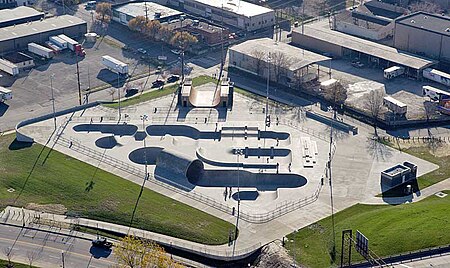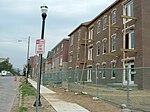David Armstrong Extreme Park

The David Armstrong Extreme Park, formerly called the Louisville Extreme Park, is a 40,000 square foot (3,700 m2) public skatepark located near downtown Louisville, Kentucky, United States, in the Butchertown neighborhood. It opened on April 5, 2002, and gained national recognition after the release of Tony Hawk's Gigantic Skatepark Tour, in which the park was featured. The park was designed with the input of a local task force. The public skatepark is owned by Louisville Metro Government and operated by Metro Parks. In 2014, about one-third of the park was demolished, to be followed by the rebuilding of facilities on adjacent property, to make way for flyover ramps to support the new Abraham Lincoln Bridge. The rebuild was completed on April 14, 2015, where the park was dedicated in former Louisville Mayor David L. Armstrong's honor.In 2023, it was announced that the park would be closing at 11PM every night, transitioning to a limited operating schedule for the first time since the park opened. This was a response to a rise in criminal activity and increased need for police presence at the park during late-night hours. At this time, several cameras were installed to enforce the curfew, and better monitor the park during operating hours.
Excerpt from the Wikipedia article David Armstrong Extreme Park (License: CC BY-SA 3.0, Authors, Images).David Armstrong Extreme Park
North Hancock Street, Louisville
Geographical coordinates (GPS) Address Website External links Nearby Places Show on map
Geographical coordinates (GPS)
| Latitude | Longitude |
|---|---|
| N 38.257025 ° | E -85.740247222222 ° |
Address
David Armstrong Extreme Park
North Hancock Street
40202 Louisville
Kentucky, United States
Open on Google Maps










